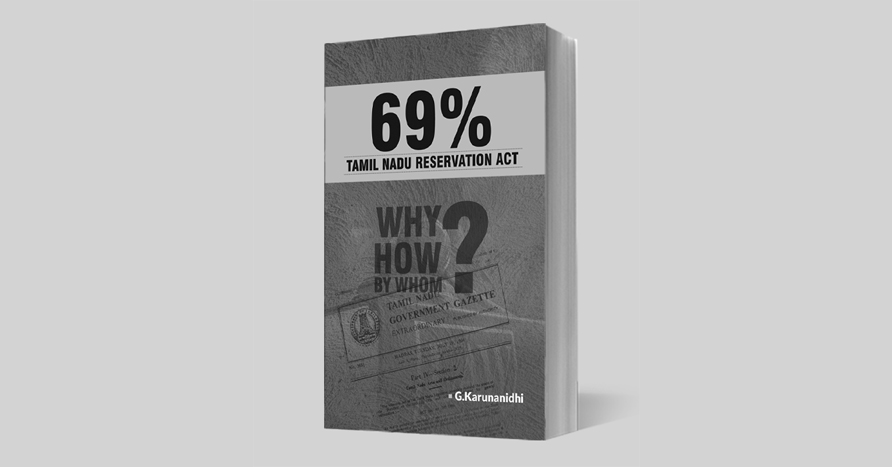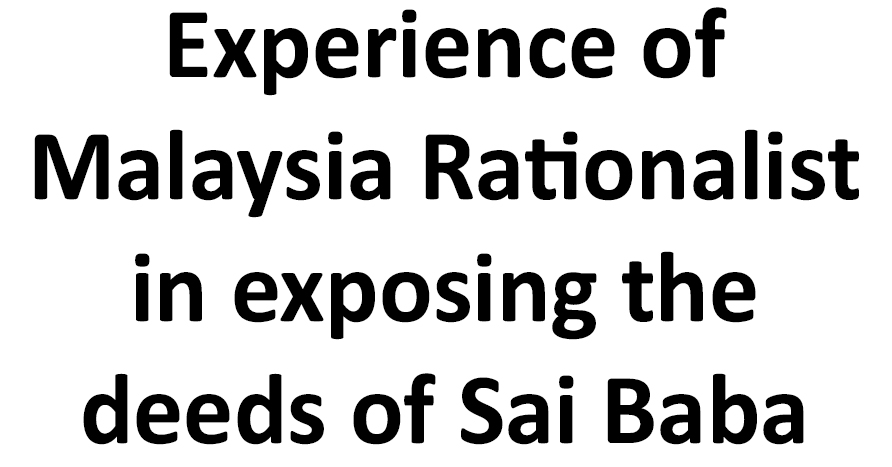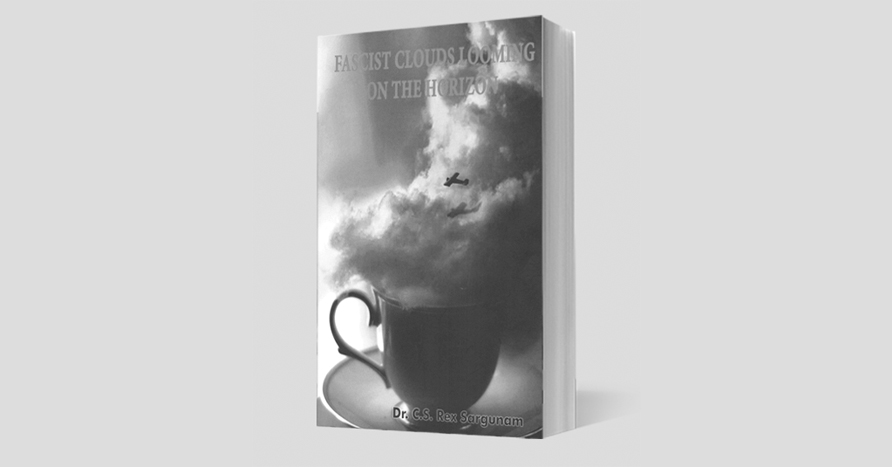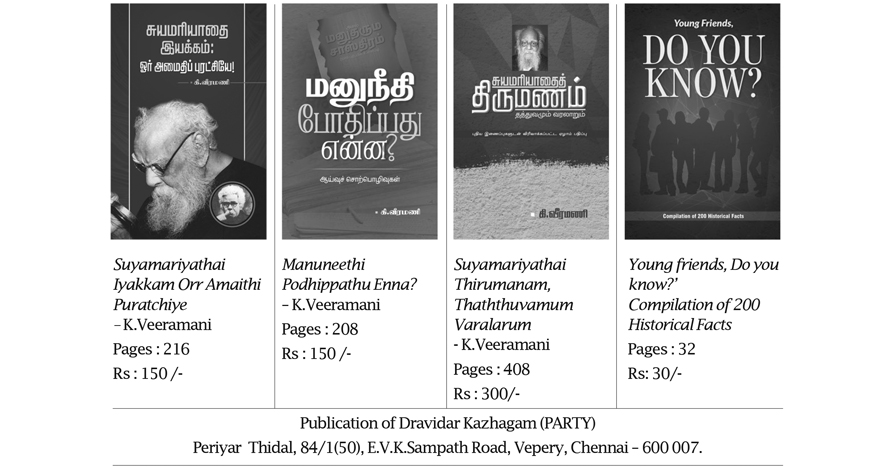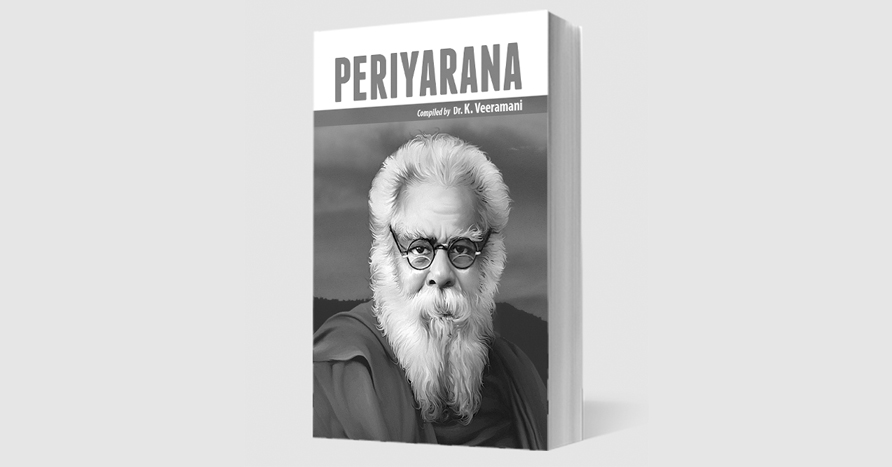‘69% Tamil Nadu Reservation Act’
Why , How, By Whom?
by G. Karunanidhi
Translation by Prof. S.F.N. Chelliah
Published by Dravidar Kazhagam, Chennai
Page: 80 Donation: Rs.80/-
The short book under review brings out the relentless struggle put up by uncompromising Dravidar Kazhagam (D.K.) and its indefatigable President, Asiriyar K. Veeramani, for getting the Act providing for 69 per cent reservation passed through the parliament. The author G. Karunanidhi, the staunch stalwart of social justice that he is, gives a precise account of the history of the Act whose genesis goes back to 1928 when the diarchy in Madras Presidency through the initiative and support of Justice Party the government passed orders for communal reservation in the Presidency in employment and later education until the two Brahmins in 1951 questioned the propriety of the practice in the High Court and got the order struck down as unconstitutional and on appeal the Supreme Court also confirmed the verdict.
Periyar revolted and launched a massive agitation forcing the Central Government to amend the Constitution (This was the first amendment to the charter) paving the way for the reservation policy to continue. It was after this that reservation for backward classes was sustained in Tamil Nadu. It was 25 per cent for the backward classes and 16 per cent for the scheduled castes from 1951. When Kalaignar M Karunanidhi became the Chief Minister he raised the reservation to 31 per cent for the Backward Classes and 18 per cent for the Scheduled castes and the Scheduled Tribes. This arrangement continued till 1979 until M.G. Ramachandran all of a sudden passed a government order restricting the reservation to people among the Backward Classes whose annual income was not more than Rs.9000 per annum. This was a bolt from the blue and the Dravidar Kazhagam rose in protest against the order, uniting all likeminded parties. The opposition to the order was so widespread that in the parliamentary elections held in 1980 MGR’s AIADMK faced a horrible debacle, forcing MGR to withdraw the order. In addition, he raised the reservation percentage to the backward classes from 31 to 50 per cent. When M. Karunanidhi came to power he bifurcated the 50 per cent reservation offering 30 per cent to the backward classes and 20 per cent to the most backward classes. He also offered 18 per cent reservation to the scheduled castes and one per cent for the scheduled tribes.
In 1990, Prime Minister V.P. Singh passed an order reserving 27 per cent in employment for the backward classes, based on the Mandal Commission recommendations. The upper class people filed a case in the Supreme Court against the order, which was ultimately upheld by a NINE judge bench. The judges went beyond their limits and pronounced that the reservation was valid only for employment and not for promotions. They also fixed a ceiling of 50 per cent for total reservations.
At this junction Asiriyar Veeramani the president of the Dravidar Kazhagam was the first leader to insist that the 69 per cent reservation followed in Tamil Nadu for 12 years must be safeguarded at all costs. He convened a special meeting of the General Council of the D.K. and passed a resolution urging the government of Tamil Nadu to pass an Act in the Legislature Assembly to safeguard the existing reservation.
Surprisingly, the General Council of the Dravidar Kazhagam has passed a copious resolution five years ago, on the same subject. The resolution has been represented in totality.
One Senior Advocate filed a suit in the Supreme Court questioning the validity of the 69 per cent reservation. A two judge bench consisting of Justices M.N. Venkatachaliah and S. Agarwal passed the order of interim stay. The Dravidar Kazhagam cadre all over Tamil Nadu set fire to the copies of the interim stay order and sent the ahes to the Chief Justice of the Supreme Court. 15000 of them were arrested all over Tamil Nadu, including K. Veeramani. When he was arrested, he proudly proclaimed. “In the policy of social justice, all the political parties stand united in Tamil Nadu. This is a great victory for Periyar’s efforts.”
On 19 October 1993, he issued a statement cautioning the Government of Tamil Nadu regarding the conspiracy of the Brahmins to reduce the 69 per cent reservation to 50 per cent, he also pointed out that the issue being emotive, may affect law and order. He pleaded to the Chief Minister to be firm, see through the crookedness of the opponents’ move and never give in because the stay order had been issued unilaterally without hearing the government’s side.
A Social Justice Conference was conducted by Dravidar Kazhagam in Chennai, and the first resolution enjoined the Tamil Nadu Government to protect the 69 per cent reservation policy by passing an Act under article 31C. A bandh was successfully conducted in Tamil Nadu and Puducherry supporting the continuation of the 69 per cent reservation.
On 17 November 1993, Asiriyar Veeramani held a press meet in which he said the wiser step for the Government of Tamil Nadu would be to pass a separate Act through the Legislative Assembly under Article 31 C of the Constitution. He also presented a ‘Model Bill’ prepared a few years back with the able guidance of Justice P. Venugopal.
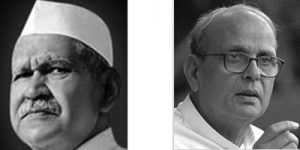
Although, the quota system has taken away posts from Brahmins, no one could take away brahmin’s brain.
– President of India Shankar Dayal Sharma, (Indian Express – 25.09.1994)
We don’t need that Brahmin brain
– Former Prime Minister V.P. Singh
According to his suggestion, Chief Minister Jayalalithaa convened an all party meeting on 26th November, when Asiriyar Veeramani after enlightening the participants on history of social justice in Tamil Nadu handed to the Chief Minister a copy of the ‘Model Bill’, which could be passed in the Assembly. Besides, he went out of the way to clear all the doubts of the dignitaries which might possibly arise. Of the two options, getting a constitutional amendment passed through Parliament and passing an Act under Article 31 C of the Constitution, the second one was easier, and yet would be as effective as the first choice.
The author has listed all the details offered by Asiriyar Veeramani in full, in the same question and answer form.
The speech made by Chief Minister Jayalalithaa in the Tamil Nadu Legislative Assembly while piloting the Bill is reproduced. Though the Act was passed on 30th December 1993, K. Veeramani felt that the President’s assent should not be taken for granted. He urged the public to send telegrams to the President in huge numbers to make him understand how strongly they felt about it.
He went on goading the government, members of parliament and other leaders to keep the fight going without any gap because the opponents were both powerful and clever, and would go to any length to sabotage the measure, which was bound to erode into their power and authority. All the same, when someone acted in a positive manner he was lavish in expressing his gratitude. After President Shankar Dayal Sharma gave his assent to the Act, Asiriyar K. Veeramani telegraphically expressed his thanks to the President, the Prime Minister and the Chief Minister of Tamil Nadu. He also sent congratulatory message to all the members of parliament who supported the move transcending party differences.
Without resting on this success, Asiriyar Veeramani kept on struggling until the Act was included in the IX Schedule of the Constitution and became immune to judicial review.
The struggle for social justice, however, is not yet over. Every year someone or other knocks at the doors of the Supreme Court to knock down the 69 per cent reservation programme followed in Tamil Nadu. If Tamil Nadu has set an example to the whole of India, the credit must go to Asiriyar Veeramani. “Tamil Nadu can legitimately feel proud of Asiriyar K. Veeramani and Dravidar Kazhagam that have demonstrated to the whole nation that Articles 31 B and 31 C that were remaining in the pages of the Constitution can be utilized for reservation in letter and spirit, “says the author in his concluding paragraph. There can be no two opinions regarding the matter.
In this painstakingly compiled book, the author has cited primary sources like Resolutions, Acts, Government Orders, speeches and letters so as to authenticate his statements. He deserves our gratitude for having recorded one of the monumental struggles of Tamil Nadu and its people and the tall leader who was responsible for it, namely Asiriyar K.Veeramani.
This book must be introduced to the younger generation to create in them a sense of history and make them realize the concept of social justice and the relentless fight launched to get it established. They must be prepared to launch equally relentless fights to uphold self respect and human dignity.
Leslie Amarson


